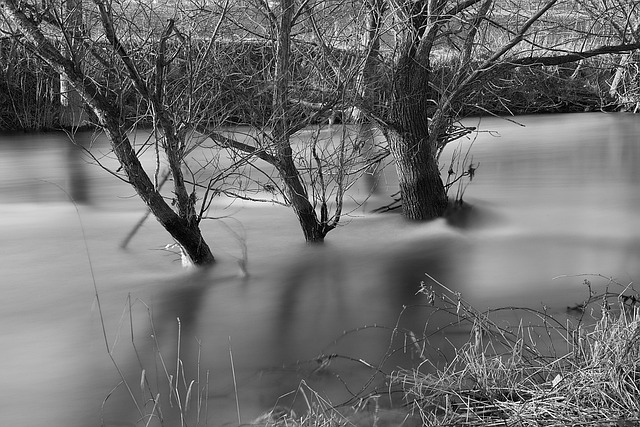
Tomorrow's weather is predicted using complex data analysis and computer models, factoring in temperature, humidity, pressure, and wind speed. Meteorologists study atmospheric patterns for snow or hail, influenced by regional factors like water bodies and mountains. Understanding these dynamics requires regular local forecast checks and consultation with climate experts. Differentiate snow and hail visually; heed weather predictions and take preventive measures for safety during severe conditions.
Are you curious about the sky’s forecast for tomorrow? Understanding weather predictions is essential, especially when expecting snow or hail. This comprehensive guide delves into the science behind forecasts and explores factors shaping tomorrow’s precipitation. From regional patterns to differentiating snow and hail, you’ll gain valuable insights. Learn how to prepare for potential weather events and stay safe. Discover the key elements influencing the sky’s display in your area, all centered around the question: What lies in store for our weather tomorrow?
- Understanding Weather Forecasts
- Factors Influencing Tomorrow's Precipitation
- Regional Weather Patterns: A Closer Look
- Snow vs. Hail: How to Differentiate
- Preparing for Potential Weather Events
Understanding Weather Forecasts

Understanding Weather Forecasts
When predicting the weather for tomorrow, meteorologists rely on sophisticated technology and intricate data collection processes to analyze atmospheric conditions. These include temperature, humidity, air pressure, and wind speed readings from various stations across a region. Advanced computer models then process this precipitation data to forecast potential storms, snow, or hail. By studying patterns in atmospheric instability, which often causes thunderstorms, experts can issue warnings for severe weather events, ensuring thunderstorm safety protocols are followed by folks in vulnerable areas.
Accurate forecasts require continuous monitoring and adaptation as conditions change rapidly. Visit us at global temperature trends anytime to stay informed about the latest climate insights. While these models have evolved significantly, nature remains unpredictable, so a degree of uncertainty always exists. Therefore, staying tuned to local weather updates is crucial for being prepared for any changes in tomorrow’s weather.
Factors Influencing Tomorrow's Precipitation

Several factors play a pivotal role in determining whether we can expect snow or hail tomorrow. According to weather forecasts, temperature, humidity levels, and atmospheric pressure are key indicators. For instance, if the air is saturated with moisture and temperatures remain below freezing, snow becomes more likely. Conversely, higher temperatures and lower humidity might suggest hail as the dominant precipitation type. Additionally, existing weather systems and fronts can influence the movement of these conditions, adding complexity to the forecast.
Understanding thunderstorm safety for indoors is crucial, especially if a storm is predicted. Evaporation and transpiration also contribute to atmospheric conditions; plants release moisture through leaves, further impacting humidity levels. To stay prepared, it’s wise to familiarize yourself with local thunderstorm safety protocols, and if you’re curious about specific weather data, give us a call at precipitation data collection.
Regional Weather Patterns: A Closer Look

The weather tomorrow is heavily influenced by regional patterns that create diverse conditions across different areas. Meteorologists study these intricate dynamics to predict short-term forecasts, which can vary drastically from one location to another. For instance, a region’s proximity to large bodies of water, mountains, or vast deserts plays a crucial role in shaping its microclimates. These factors interact with atmospheric conditions, such as air pressure and wind patterns, contributing to variations in temperature, humidity, and precipitation.
Understanding these interactions is where meteo science basics come into play. The heat index calculation, for instance, considers both temperature and humidity to determine how hot the air feels to humans. Similarly, the temperature-humidity relationship reveals how these two variables affect each other, influencing comfort levels and potential weather phenomena like hail or snow. Given these complex interactions, it’s essential to stay informed by checking local forecasts regularly and even giving us a call at climate change adaptation for insights into how these patterns might evolve in the future.
Snow vs. Hail: How to Differentiate

When predicting whether tomorrow’s weather will bring snow or hail, it’s crucial to understand the distinct characteristics of these two winter phenomena. Snow forms when water vapor in the atmosphere condenses into ice crystals, which then fall from clouds as flakes. These flakes are light and fluffy, often creating a picturesque blanket over landscapes. On the other hand, hailstones develop within storm clouds during strong updrafts. As water droplets freeze around a small particle, they grow larger and eventually fall to the ground as solid pellets.
To differentiate between snow and hail, observe the sky’s conditions. Snow is typically associated with lighter, feathery accumulations, while hail is more likely to result in dense, clumpy piles. If you notice a cloudy sky formation with dark, rolling clouds, hail could be on the horizon. Conversely, clearer skies with wispy cirrus clouds often signal snow. Before heading outdoors for activities in stormy weather, check tomorrow’s weather predictions for specific details and stay safe during any severe conditions. Remember that where there’s a will to explore, there’s a way, but always prioritize your well-being first, especially when Mother Nature throws unexpected elements like hail or snow at us. Find us at cloudy sky formation for more insights tailored to your location.
Preparing for Potential Weather Events

When preparing for tomorrow’s weather, it’s crucial to stay informed and flexible. While predicting the exact conditions can be challenging due to weather forecasting errors, understanding weather forecasts through meticulous meteorological data analysis allows experts to provide valuable insights. Keep an eye on local predictions and be ready to adapt your plans accordingly.
In light of this, consider taking preventive measures like securing loose items outdoors to avoid damage from potential hail, and ensuring you have adequate supplies in case of snowfall. Remember, understanding weather forecasts can help mitigate risks associated with severe weather events. For indoor thunderstorm safety tips, find us at thunderstorm safety for indoors.
When considering the prospect of snow or hail tomorrow, it’s crucial to analyze various weather factors and regional patterns. By understanding how these elements interact, you can better prepare for potential precipitation events. Utilizing accurate weather forecasts, being aware of changing conditions, and taking proactive measures will ensure you’re ready, whether it brings a snowy landscape or a hailstorm. Stay informed about the weather tomorrow to make sure you and your community are prepared for whatever mother nature decides to bring.






